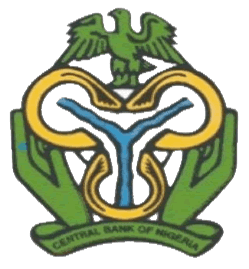Monetary Policy
MPC Mandate of the CBN | Fiscal Policy | Committees | Calendar of Meetings | Educational | FAQ's | Policy Decisions | Policy Communiques | Intl. Economic Cooperations | Monetary Policy Review | Policy Measures | Understanding Monetary Policy Series | Monetary, Credit, Foreign Trade and Exchange policy Guidelines | Monetary Policy Committee Reforms | AfCFTA
Monetary Policy Decisions
195th MPC Meeting of 28th November, 2006
- Adoption of a new monetary policy framework to be effective from Monday December 11 th 2006
- The new monetary policy framework would be launched on Monday December 4, 2006
- The new Monetary policy framework would introduce a new Monetary Policy Rate ( MPR ) to replace the Minimum Rediscount Rate ( MRR )
- The MPR would be the main instrument of the new monetary policy framework and will determine the lower and upper band of the CBN standing facility and is expected to have the capability of acting as the nominal anchor for other rates
- Discontinue outright rediscounting of bills in the CBN to encourage trading among the market operators
- Ensure the full deployment of Information Technology (IT) infrastructure (RTGS, T24, and eFASS) for the effective implementation of the new monetary policy framework; and
- Convene meeting of the MPC every other month to review developments in the economy.
- Challenges arising from the new policy framework
- Gave consideration to the policy setting rules such as the monetary policy response function, the frequency of changes in the MPR , significance of inflation considerations in determining the MPR , the problem of price, credit and operational risks, sensitization of operators and other stakeholders, training, etc
MPC Meeting of August 9, 2006
- Maintained the MRR at 14% with a proviso to review the MRR should the threat to monetary policy continue;
- Approved a new framework for monetary policy implementation. The IT and other logistics requirements are to be sorted out between now and October, 2006. Pilot implementation is expected to commence on or before November 1st, 2006
- Sustained the CBN’s zero tolerance to lending to government;
- Reaffirmed that there is no control on interest rate or pegging of lending rate to the MRR;
- Approved operational guidelines on the CBN Discount Window;
- Approved guidelines for discount window operations in FGN bonds;
- Sustained the on-going liberalization of the forex market.
- Raised the MRR from 13% to 14%, to take effect from 12th June, 2006;
- Maintained the CRR at 5%;
- Resolved to sustain the on-going liberalization of the forex market as well as effectively monitor the market to maintain stability of the naira;
- The Monetary Policy Implementation Committee (MPIC) would continue to keep daily surveillance on monetary operations;
- With the deployment of the electronic Financial Analysis Surveillance System (eFASS), the Bank will leverage on that to ensure the proactive implementation of monetary policy;
- The OMO shall continue to be the major instrument of monetary policy;
- The Committee, further assured that it would respond to changes in economic prospects as needed to support the attainment of its objectives.
![]() MPC Meeting
of February 14, 2006
MPC Meeting
of February 14, 2006
- Resolved to work towards maintaining single digit (core) inflation;
- The Bank will work towards zero ways and means. However, where it becomes absolutely necessary, ways and means will not be more than 5% of last year’s revenue; and such lending will attract the prevailing MRR + 1 per cent rate of interest.
- CBN will continue with regular OMO operations and issuance of new bills, both TBs and CBN bills;
- MRR will be maintained at 13% in line with the anti-inflation stance of the MPC;
- As a measure of tight monetary stance, M2 will be kept within the range of 15 to 17% target;
- CRR is to be maintained at 5%, while the liquidity ratio will be retained at 40%;
- Wholesale-DAS will commence on 20th February, 2006 to foster exchange rate convergence between the DAS and the inter-bank market rates.

 Flickr
Flickr Instagram
Instagram LinkedIn
LinkedIn